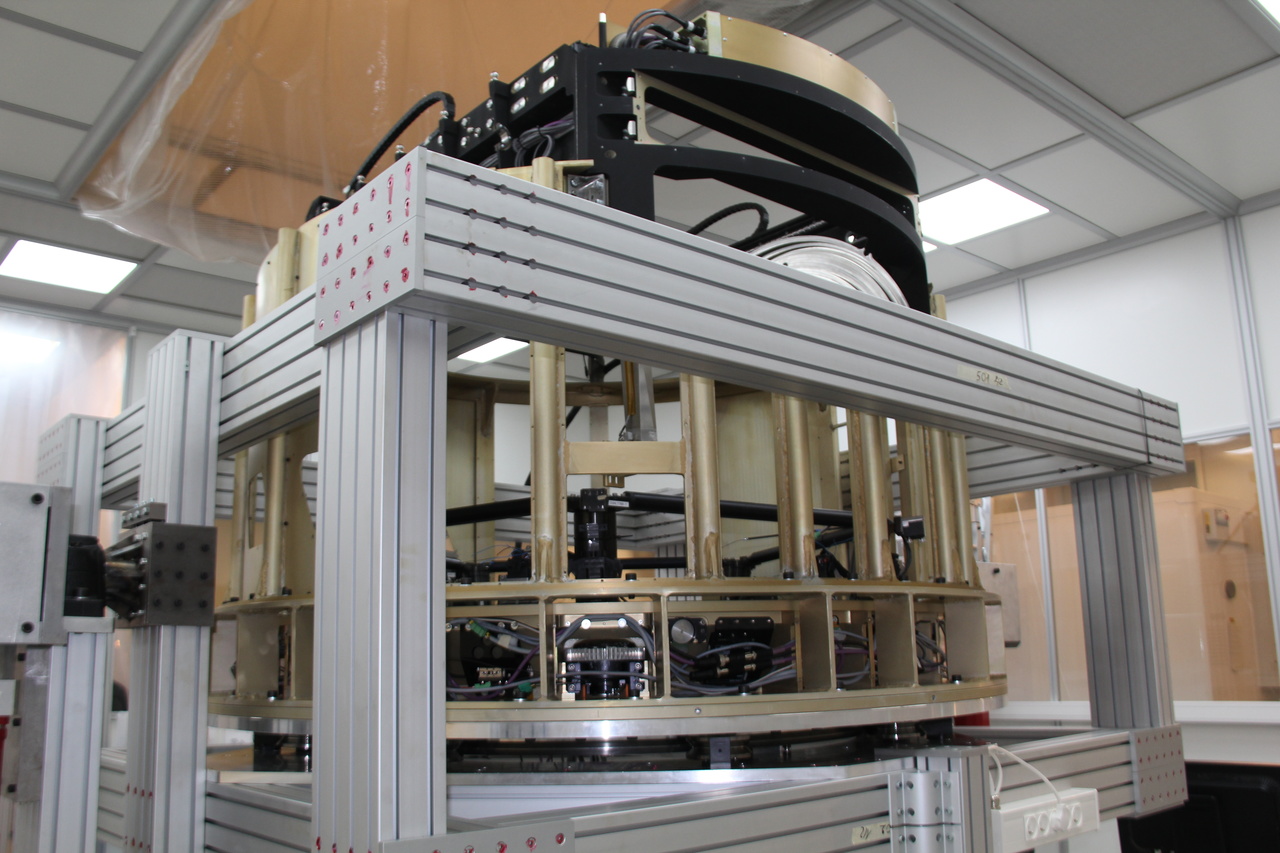July 16, 2018 - In Paris, France, the Filter-Exchange team is currently performing combined testing of the prototype filter exchange components at the Laboratoire de Physique Nucléaire et de Hautes Energies (LPNHE). The filter exchange is the result of the collaborative work of five French IN2P3/CNRS laboratories.
There are three components in the filter exchange system: the auto-changer, the carousel, and the filter loader. The prototype auto-changer and carousel (featured in the photo above) are being used to test the many individual components of the system and how they perform in the assembled unit. Addressing challenges with this prototype system will greatly reduce issues encountered once the production system is assembled.
The LSST Camera has a total of six filters, with five filters in the camera at one time. During nightly observations, the auto-changer will efficiently swap the filter in place over the lens with another filter from one of the five storage positions on the carousel. The system has less than two minutes to change a filter, so the auto-changer has been designed to move smoothly and quickly. The graphic at this link shows the action of the auto-changer.
The filter-exchange system is compact but robust; 200kg (≈441lbs) of weight is moved whenever the carousel rotates. The filters self-clamp into their storage positions, but a mechanical action is required to release them. The clamps hold the filters securely, but not too tightly--in case of seismic activity the delicate filters need a bit of "wiggle room" to reduce the risk of damage.
Only five of the Camera's six filters will be used in the Camera on any given observing night, but during the day, the filter loader can exchange one of these filters for a different one. The filter loader doesn't have to work as quickly as the auto-exchanger, but it must still handle the delicate filters carefully. Additionally, it's important that the inside of the filter loader be kept clean and free of dust. Two loaders and two auto-changers will be built; if one requires maintenance the other can be used so there's no disruption in activity.
In a separate clean room at LPNHE, the production carousel is being assembled and will soon be attached to the back flange of the Camera, which was shipped to Paris from the SLAC National Accelerator Laboratory in June 2018. The combined unit will be returned to SLAC in January 2019, ready for Camera integration.


